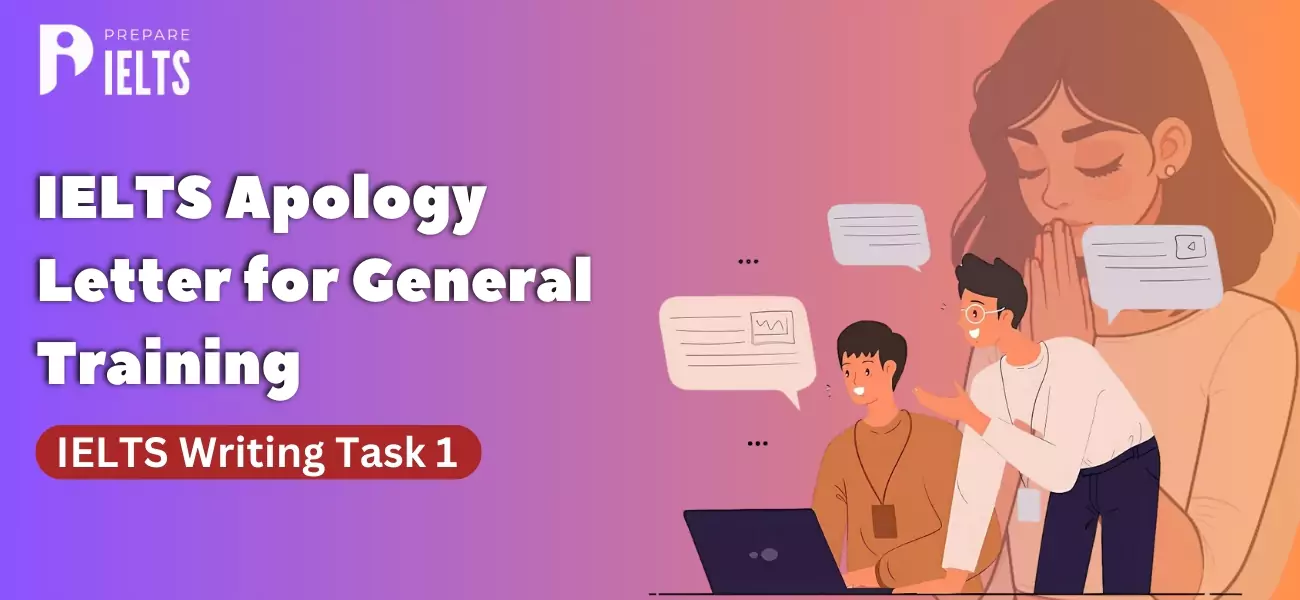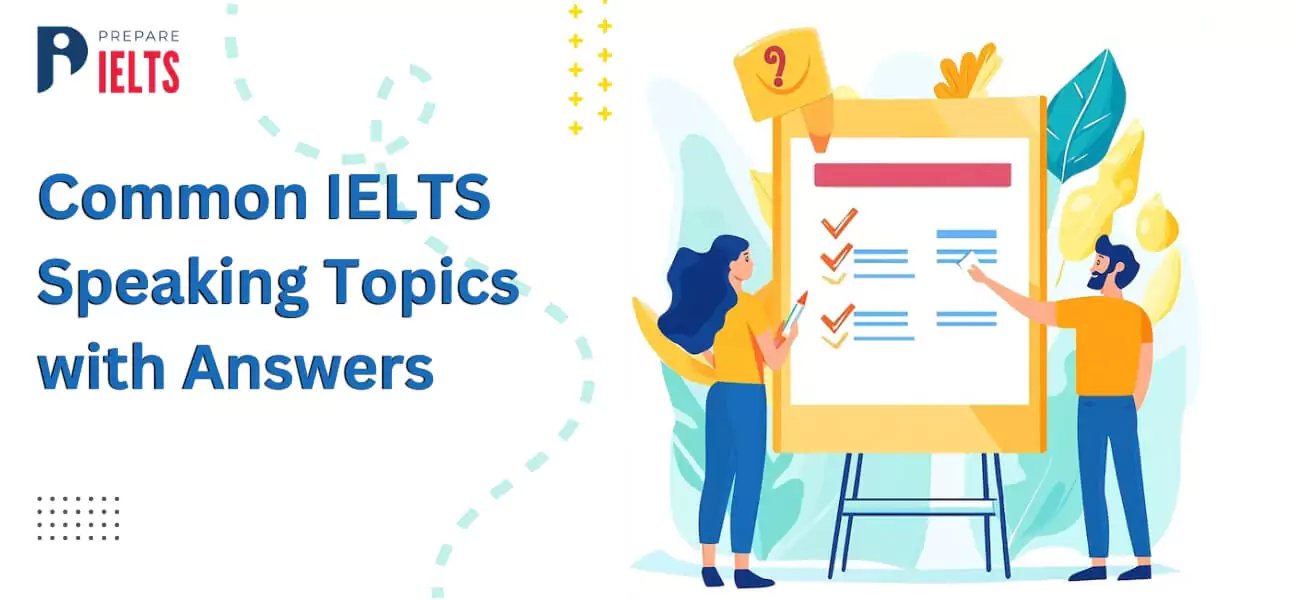
Overview
In order to study, work, or immigrate to an English-speaking country, one must prove their language abilities by taking the IELTS Academic or General test.
But do you know the syllabus for IELTS? Before enrolling for the exam, it is very important for the person to know the syllabus, key points, and exam format. Recently, the official authorities issued the IELTS Exam Syllabus and Pattern for applicants who wish to take the IELTS in 2024.
Therefore, in this blog, we will examine the important aspects of the IELTS syllabus, the exam content for both Academic and General Training modules and the format of the IELTS test. We will also learn more about the International English Language Testing System syllabus.
Key points of the IELTS Syllabus and Exam Pattern
Before diving into the IELTS exam syllabus, it's important to understand some key points about the IELTS syllabus and exam pattern.
-
IELTS offers two modules - Academic and General Training. The Academic module is for those planning to study at undergraduate or postgraduate level, while the General Training module is for individuals seeking work experience or migrating to English-speaking countries.
-
The IELTS test examines four essential language skills: Listening, Reading, Writing, and Speaking. Each skill is measured on a scale of 0 to 9.
-
The IELTS syllabus is designed to reflect real-life situations and challenges. The content is practical and relevant, ensuring candidates can communicate effectively in various contexts.
-
The timing of the IELTS Exam syllabus is 2 hours 45 min.
IELTS Exam Syllabus
The IELTS syllabus contains different syllabi for the Academic and General Training modules. You can check the complete IELTS syllabus below.
IELTS Exam Syllabus for Academic Training
If you want to study in English-speaking countries, you must first check the IELTS Syllabus for Academic training. It will help you to prepare best and get a good band score in the exam.
Listening - The listening component assesses the ability to understand spoken English in various academic contexts. This includes listening to lectures, conversations, and discussions, often involving multiple accents and dialects.
Reading - The academic reading test evaluates the ability to read, understand, and analyse academic texts, such as articles, journals, and reports.
Writing - The writing section requires candidates to complete two writing tasks. Task 1 involves summarising, describing, or explaining visual information (charts, graphs, diagrams). Task 2 is an essay that requires critical analysis and argumentation on a specific topic.
Speaking - The speaking test is based on a face-to-face interview that assesses the ability to communicate effectively in spoken English. It includes a structured conversation, a short speech on a familiar topic, and a discussion with the examiner.
IELTS Exam Syllabus for General Training
Check the IELTS Syllabus for General Training below if you want to work in English-speaking countries.
Listening - The general training listening test assesses understanding everyday spoken English in various situations, such as social interactions, workplace discussions, and public announcements.
Reading - The general training reading test evaluates the ability to read and understand practical, everyday texts, including advertisements, brochures, and job-related documents.
Writing - Similar to the academic module, the general training writing section includes two tasks. Task 1 consists of writing a letter based on a given situation, while Task 2 is an essay that requires candidates to express a point of view, argue, or problem-solve.
Speaking - The speaking test for the general training module is also a face-to-face interview but focuses on everyday communication in social and workplace contexts.
As we discussed above, the syllabus for academic training and the syllabus for general training for the IELTS are different. It's time to get more details about the different syllabus sections, such as speaking, listening, writing, and reading.
IELTS Speaking Syllabus
The Speaking portion consists of a three-part, 11–14-minute in-person interview. In Part 1, the candidate responds to general questions about their experiences, background, and hobbies. The candidate has two minutes to talk in Part 2 on a specific topic. Part 3 provides a summary of the subjects covered in Part 2.
| Section | Type of Recording | Number of Question | Key Points |
|---|---|---|---|
|
1 |
Answer general questions about your background, interests, and experiences |
4-5 minutes |
Fluency, accuracy, vocabulary, and pronunciation |
|
2 |
Speak on a given topic for 1-2 minutes (prepare for 1 minute with a prompt card) |
3-4 minutes |
Fluency, accuracy, vocabulary, pronunciation, and ability to organise ideas and thoughts |
|
3 |
Two-way discussion based on the topic in Part 2; the examiner will ask further questions related to the topic |
4-5 minutes |
Fluency, accuracy, vocabulary, pronunciation, and ability to express and justify opinions |
IELTS Listening Syllabus
There are 40 questions in total over four sections for listening. Test takers get 30 minutes to finish the entire exam and 15 minutes to finish their responses. There can be talks, monologues, or chats on the recordings. There will be a social or academic setting.
| Part | Type of Recording | Number of Question | Key Points |
|---|---|---|---|
|
1 |
Conversation between 2 speakers |
10 |
Social context: everyday topics |
|
2 |
Monologue (one speaker) |
10 |
Social context: everyday topics |
|
3 |
Conversation (up to four speakers) |
10 |
Academic context: educational or training-related topics |
|
4 |
Monologue (one speaker) |
10 |
Academic context: lecture or talk on an academic subject |
IELTS Writing Syllabus
The writing portion of two assignments must be finished in 60 minutes. Task 1 on the Academic IELTS consists of explaining a graph, table, chart, or diagram; Task 2 is an essay that focuses on a particular subject. Writing a letter is Task 1 of the General Training IELTS while writing an essay on a predetermined topic is Task 2.
| Assignment | Academic Training | General Training | Time Given | Key Points |
|---|---|---|---|---|
|
1 |
Describe a graph, table, chart, or diagram |
Write a letter (formal or informal) |
20 minutes |
Clarity, coherence, grammar, vocabulary, and appropriate tone |
|
2 |
Write an essay on a given topic |
Write an essay on a given topic |
40 minutes |
Clarity, coherence, grammar, vocabulary, and ability to address the topic and support arguments |
IELTS Reading Syllabus
For the Academic IELTS, candidates must respond to 40 questions in the reading section based on three or more passages; for the General Training IELTS, candidates must respond to multiple shorter texts or snippets. This portion of the test takes candidates 60 minutes to complete. The sections can cover various topics, including environmental issues, science, history, and culture.
| Academic Training | General Training | |
|---|---|---|
|
Access |
3 passages from books, magazines, newspapers and journals |
Section 1 - 2-3 short texts; Section 2 - 2 texts; Section 3 - 1 long text |
|
Time |
60 minutes |
60 minutes |
|
Questions |
40 questions total |
40 questions total |
|
Types |
Multiple choice, short-answer questions identifying information (True/False/Not Given), matching headings, identifying writer’s views/claims (Yes/No/Not Given), matching information, matching features, matching sentence endings, summary/note/table/flow-chart completion, sentence completion, diagram labelling |
Identifying information (True/False/Not Given), matching information, matching headings, matching sentence endings, sentence completion, identifying writer’s views/claims (Yes/No/Not Given), summary/note/table/flow-chart completion, diagram labelling, short-answer questions, matching features, multiple choice |
|
Context |
Wide-ranging subjects, such as science, culture, environmental issues, history |
Section 1- Everyday Social Context Section 2 - Workplace Context Section 3 - General reading texts |
|
Skills |
Reading comprehension, skimming, scanning, identifying main ideas, understanding specific details, recognising opinions and attitudes, inferring, and summarising |
Reading comprehension, understanding specific details, skimming, identifying main ideas, scanning, recognising opinions and attitudes, inferring, and summarising |
Register Now, for a free Mock test - Join Today!
IELTS Exam Format
Remembering the format of the IELTS exam is essential for effective preparation. The IELTS exam format includes the following -
| Sections | Description | Number of questions/Duration | Marks | Band Descriptors/Band score |
|---|---|---|---|---|
Listening |
It contains four recordings, consisting 2 conversations and 2 monologues related to the social and academic context. |
40 questions/30 minutes |
1 mark per question |
0-9 band scale |
|
Reading |
Three reading passages with different question types are sourced from books, journals, etc. |
40 questions/60 minutes |
1 mark per question |
0-9 band scale |
Writing |
Task 1: 150-word essay based on the given chart, map, diagram, or letter. Task 2: 250-word essay based on the given situation. |
2 tasks/60 minutes |
Both writing tasks 1 and 2 are evaluated separately. Task 2 has more weightage than Task 1 |
Task Achievement (Task 1), Task Response (Task 2) Coherence and cohesion Lexical resource Grammatical range and accuracy |
|
Speaking |
Part 1: Personal interview |
3 parts/11-14 minutes |
|
Fluency and coherence Lexical resource Grammatical range and accuracy Pronunciation |
Points for IELTS Success
-
Recall the exam structure: A solid grasp of the IELTS syllabus and format will help you navigate the test more skillfully and boost your score.
-
Practice: Taking comprehensive practice exams regularly helps you assess your progress and replicates the natural examination setting.
-
Develop Effective Time Management Skills: Develop practical time management skills to finish each IELTS exam section on time.
-
Boost Your Vocabulary: A vast vocabulary base will help you understand and respond to questions in the Speaking, Reading, Writing, and Listening portions much better.
-
Improve Your Grammar and Punctuation: Your ability to communicate your ideas clearly in the Writing section and comprehend complex materials in the Reading section depends on your proficiency with grammar and punctuation.
-
Get Input: Whenever feasible, practice before a former examiner who can provide insightful criticism and direction on your performance.
Conclusion
Understanding the key points, the complete syllabus, and the IELTS exam format is essential to effectively preparing for the IELTS Academic and General. If you are embarking on a higher education journey, pursuing work opportunities, or planning to immigrate, accurate knowledge and understanding of the IELTS syllabus is the key to achieving your goals.
We hope the above details of the IELTS Exam Syllabus: Exam Format and More will help you to prepare best for the exam. If you need further guidance, please contact Prepare IELTS Exam (PI) expert counsellors. Our team of education experts is dedicated to providing you with the best guidance in the IELTS exam. You can get a one-on-one counselling session online via our platform. Contact us at info@prepareieltsexam.com or call us at +91 9773398388.
FAQs
The general structure of the IELTS syllabus is consistent worldwide, and general training is required for people who wish to work in other nations or immigrate there.
Yes, the syllabus of the Academic and General Training modules is different. Although both modules assess the same four language skills (Listening, Reading, Writing, and Speaking), the materials and tasks are tailored to other purposes.
The IELTS exam is scored on a scale of 0 to 9 for each of the four skills. The scores for each skill are then averaged to calculate an overall band score. A band score of 6.5 to 7 is generally suitable for most academic and professional purposes. However, specific score requirements may vary by institution or organisation.
There is a different syllabus for IELTS Life Skills assessments, which are intended for people who want to improve their speaking and listening skills for immigration and visa requirements. These tests assess a candidate's ability to communicate through conversation and discussion with an examiner in everyday, social, and workplace contexts.
Yes, many candidates choose to prepare for the IELTS exam independently using online resources, practice materials, and sample tests. However, some individuals may benefit from formal IELTS preparation courses or coaching to receive personalised guidance and feedback on their performance. The choice depends on your comfort with self-study and your specific needs.
Latest Blogs
-

IELTS Score for Canada: Minimum IELTS Requirement for Canada 2025
2024-09-27 18:24:14
-

IELTS Apology Letter for General Training: IELTS Writing Task 1
2024-09-25 16:38:03
-

Minimum IELTS Score for Australia: Student Visas, Universities, and PR in Australia
2024-09-23 18:09:51
-

Common IELTS Speaking Topics with Answers
2024-09-20 18:21:56
-

Describe a foreign culture that you like: IELTS speaking cue card
2024-09-18 16:14:11
-

Describe a Rainy Day IELTS Speaking cue card
2024-09-18 11:11:32
-

Describe a new law you would like to introduce in your country IELTS cue card
2024-09-13 17:17:46
-

Describe your favourite weather: IELTS cue card
2024-09-11 18:01:28
-

Describe an enjoyable journey by public transport: IELTS cue card
2024-09-09 18:05:45
-

Step-by-Step Guide to IELTS Registration in India for the Year 2024 & 2025
2024-09-07 12:59:51


